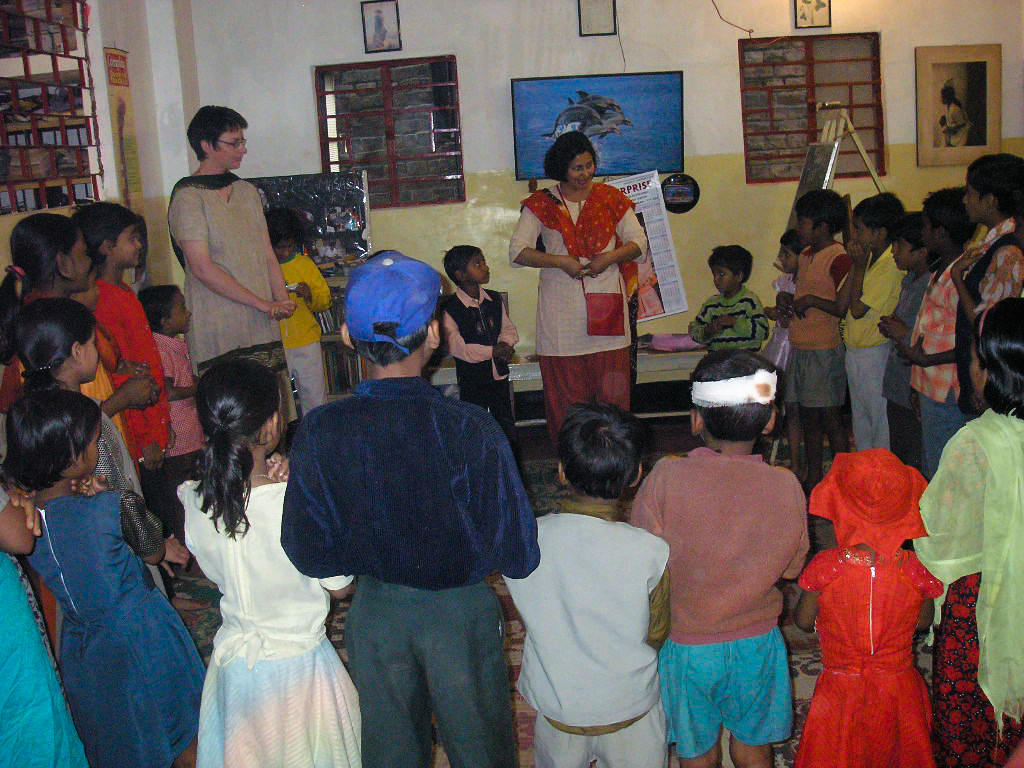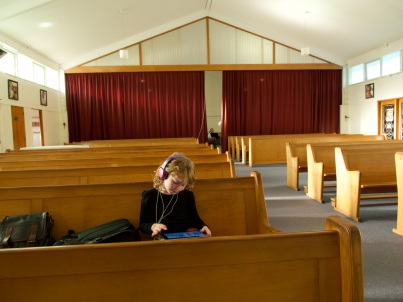Thanks to some amazing role models in the School of People, Environment and Planning at Massey University, where I studied, I have always known that it is possible (although not easy) to be a parent/grandparent and an academic. What I wasn’t quite so sure about was how, exactly, you went about doing ethnographic fieldwork with kids in tow. As an undergraduate student I read ethnographies written by anthropologists who had their families with them while conducting fieldwork – including Philippe Bourgois’ In Search of Respect: Selling Crack in El Barrio, Nancy Scheper-Hughes’ Death Without Weeping: The Violence of Everyday Life in Brazil, Annette Weiner’s The Trobrianders of Papua New Guinea, and Margaret Trawick’s Notes on Love in a Tamil Family – but I don’t recall many classroom discussions about the relationship between carework and fieldwork. This changed once I started my PhD. A number of my fellow PhD researchers juggled mothering and grandparenting with fieldwork, and have since written about how their experiences influenced their research (e.g., Lesley Reed’s thesis ‘What is this thing called Grandparenting? The social, economic and political influences on the role in New Zealand‘, or see the list Kelly Dombroski has here on her blog). My first glimpse into what it was like to actually do fieldwork with your child present was during a research trip to Kolkata, India, in late 2005.
November 2005 marked the start of my first formal period of ethnographic fieldwork in Kolkata. My dissertation advisor, Sita, was also there conducting her own research, accompanied by her 8-year-old daughter, Cileme. Sita grew up in Kolkata and could make her childhood home her base while conducting fieldwork. Cileme has been a familiar face at Massey’s Social Anthropology department since she was a baby – sleeping while Sita marked essays in her office, playing quietly during meetings – but this was the first time I had seen Sita combine carework with fieldwork. During that 2005/06 trip I recall having conversations with Sita about how she juggled research with her family responsibilities, and short chats with Cileme about what she thought of school and her time in Kolkata. I watched Cileme fidget in her chair during the launch of Sita’s first book, Development and Ethnocide, at Kolkata’s Seagull Book Store, and when her patience evaporated I marvelled at Sita’s ability to continue reading from her book as though Cileme was not putting on her own impromptu performance for the audience. I also appreciated being welcomed into Sita’s family home and seeing the close relationship Sita and Cileme have with one another and their wider family.
One moment in particular has stayed with me over the years as a model for how to involve children in the research process. It took place at Talimi Haq School, a small, nonformal school for children from some of the poorest households in Howrah’s Priya Manna Basti. Talimi Haq School is run by Howrah Pilot Project, one of the groups I worked with for my PhD. My dissertation originally began as an offshoot of Sita’s larger project on grassroots activism, and she introduced me to Howrah Pilot Project in 2004. In 2005 she had returned to Kolkata to conduct a survey with children from Talimi Haq School (which she has written about here).
One warm December afternoon, while I was at Talimi Haq School, Sita arrived with Cileme to spend some time with the children and administer the survey. It did not take long for Cileme to lose interest in watching the children have their lessons and demand that Sita pay attention to her. In an effort to integrate Cileme into the research process, Sita decided that they would teach the children how to sing a variety of action songs.

This moment stands out for me not because of the songs we sang, but because of the gentle way in which Sita responded to her daughter’s needs while also seeking to meet her own need to develop strong research relationships with these children. She was not always successful at balancing these often competing needs. For example, she could not spend as much time in Priya Manna Basti as she would have liked and returned home to New Zealand before collecting all the information she required for her project, asking me to help conduct the final few interviews and surveys on her behalf. Nevertheless, 10 years and two children of my own later, this experience provides me with a memorable blueprint for how to do fieldwork with my kids in tow.

Last year, I took my 5-year-old along with me when I attended the after-school rehearsals of one of the orchestral music education programmes I am currently studying. This was out of necessity; I needed to do fieldwork, and I needed to care for my daughter after school. To start with I also took an iPad to keep her occupied and alternated between observing rehearsal and spending time with her. On our second fieldwork trip, she surprised me by asking if she could play the violin with the rest of the kids. Of course I said yes – as did the programme’s coordinator – and she has been having lessons and joining in ever since. Although she refuses to practice at home, she loves going to orchestra, performing in concerts, and tagging along with me when I’m doing fieldwork.
I am now the parent of one of the kids in the groups I am studying as an anthropologist. My identity has shifted (again) and, like David Poveda (2009), I am a ‘parent and ethnographer of other children.’ This has changed my research relationships, my fieldwork kit, and has given me a different perspective on what it’s like to be involved with these orchestral music education programmes. It has also led me to reflect on that 2005 trip to Kolkata and realise just how blurred the lines are between fieldwork and family life. As I wrote in an earlier blog post on doing fieldwork with kids, I designed this research project in part due to my family commitments, and it is turning into an amalgamation of everything I’m interested in – anthropology, ethnography, inequality and social justice, music, children, family. I’m still figuring out how to balance my daughter’s needs with my research needs during fieldwork, and when she plays up I’m often reminded of Cileme’s antics in Kolkata, and Sita’s gentle but firm responses.

I’m also reading a lot about fieldwork with children and academic parenting at the moment (including Reetta Toivanen’s blog posts on combining fieldwork with children, Family and Work in Everyday Ethnography edited by Tamara Mose Brown and Joanna Dreby, and Children in the Field: Anthropological Experiences edited by Joan Cassell), and appreciate conversations I have had with colleagues about the challenges and opportunities involved in working, travelling, and doing fieldwork with kids. Have you had any experience with this? Perhaps you can recommend a reading? I would love to hear from you.
Great post Lorena! I, too, have recently begun a project that combines a lot of my loves: outdoor work, young people’s health and wellbeing and spirituality, alternative economies. I am hoping to take my older daughter with me this week while on school holidays.
Sounds great Kelly, I look forward to hearing more!
nice + links!